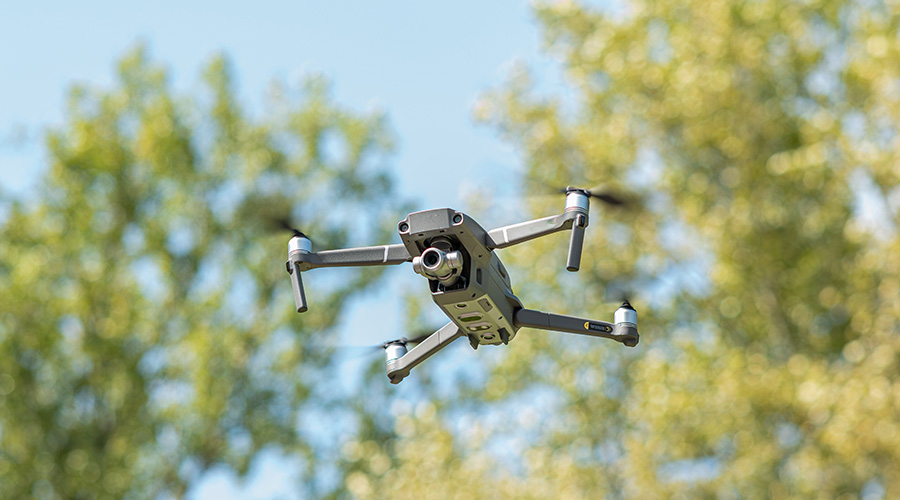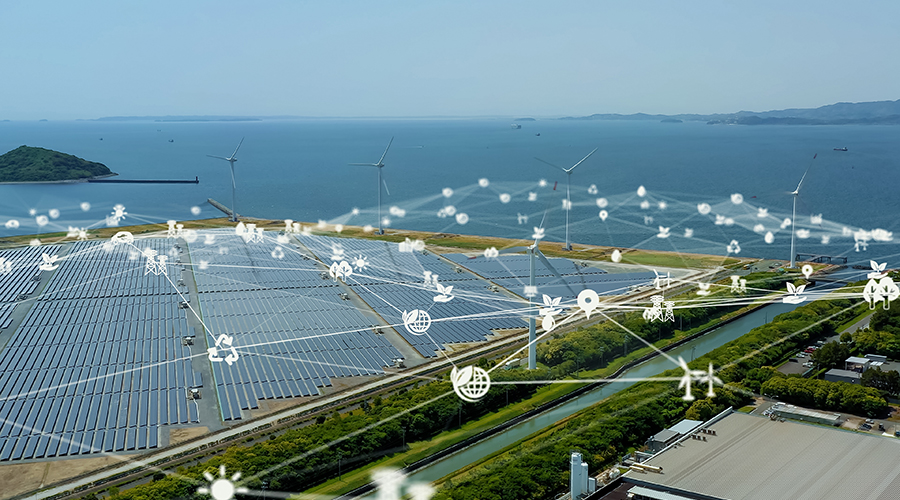
How Drones Play Critical Role in Workplace Safety
World Day for Safety and Health at Work 2025 sheds light on how technology helps transform dangerous work tasks. April 28, 2025
By Dave Lubach, Executive Editor
Drones continue to make an impact in the facilities management world. They are becoming increasingly important for tasks that often include some risk of injury.
“Employing drones to inspect parts of a facility not easily accessible means that facilities workers involved in those inspections no longer must perform them at height or even on a raised service,” says Tim Eldridge, global head of health safety environment and quality for JLL. “The use of drones removes the need for working at height on inspections and enables our facilities teams to capture hard-to-view areas.”
April 28 has been designated World Day for Safety and Health at Work 2025. Organized by the International Labor Organization, the day is planned to shed light on how new technologies are transforming work using automation and tools, resources and materials designed to support occupational safety and health practices.
Drones are one example of a technology that is transforming the ways many facility technicians can do their jobs.
FacilitiesNet talked with Eldridge about the safety benefits of drone technology to execute facility tasks.
FacilitiesNet: What are the most common risks in manual building inspections that drones help mitigate?
Tim Eldridge: The risk of falling from height potentially carries fatal consequences. Drones also reduce manual handling, which is associated with rope access works and the use of ladders, scaffolding and other mobile elevating work platforms (MEWPs). Trapping and pinching of mechanical parts associated with scaffolding is also mitigated using drones.
FN: Can drones inspect high-rise buildings and rooftops safely?
Eldridge: Like any piece of work equipment, there are safety considerations to consider. Drones are by no means risk-free, but this is where competency and planning come in. Proper training and planning ensure that the use of drones does not impact on other operations, such as nearby aerodromes.
FN: How do drones help detect structural weaknesses or hazards before they become critical?
Eldridge: Often with the use of high-level access equipment, certain areas are still unable to be adequately viewed. Drones give facilities teams a better understanding of areas once inaccessible and help us address an issue before it becomes larger and more expensive. Commercial drones have high-quality cameras and other technological features that allow more enhanced views. The aerial photography captured by the drone is consistent and high-quality, thus enabling facility conditions are easily interpreted and compared against historic imagery. Artificial intelligence (AI) also now plays a big part in this ever-developing technology. Some drone providers utilize an AI detection tool, which helps flag anomalies within the imagery for faster analysis and diagnosis.
FN: What are some of the economic benefits of using drones for certain tasks, in addition to their safety benefits?
Eldridge: The cost of a drone operator will certainly be cheaper than the cost of installing and hiring scaffolding, MEWPs or arranging abseiling, for a start will need less labor force and will negate the hire costs. There is also some environmental benefit, as in more urban areas it reduces the need for larger heavy goods vehicles coming into cities and towns to offload.
FN: What are some other important aspects of drone use that managers should remember?
Eldridge: The use of commercial drones requires permits and licensing, so it is always important to factor this in when planning the use of a drone. The permitting and licensing processes need to be factored in for timing. Third-party providers can advise on the timing associated with permits, particularly for high-risk or restricted areas. The impact of these permissions is usually not adverse and can be built into the lead in for the inspection.
Dave Lubach is the executive editor for the facilities market.
Next
Read next on FacilitiesNet












